Xianfeng Tan
Variations of sedimentary environment under cyclical aridification and impacts on eodiagenesis of tight sandstones from the late Middle Jurassic Shaximiao Formation in Central Sichuan Basin
Tan, Xianfeng; Jiang, Wei; Luo, Long; Gluyas, Jon; Song, Linke; Liu, Jianping; Qu, Xuejiao; Wang, Jia; Gao, Xuanbo; Zhang, Wei; Wang, Qiao; Chen, Long
Authors
Wei Jiang
Long Luo
Professor Jon Gluyas j.g.gluyas@durham.ac.uk
Professor
Linke Song
Jianping Liu
Xuejiao Qu
Jia Wang
Xuanbo Gao
Wei Zhang
Qiao Wang
Long Chen
Abstract
Understanding eodiagenesis is essential to decoding the diagenetic pathways of tight sandstones that act as excellent unconventional oil & gas reservoirs. Great paleoclimate change is capable of influencing eodiagenetic processes of tight sandstones through variations of sedimentary environment. However, it is less noted how climate gradients between the greenhouse and the hothouse conditions impact the eodiagenesis of tight sandstones. We examined eodiagenetic processes that has been operated in the Shaximiao Formation sandstones using petrographic observation, scanning electron microscopy, geochemistry, and XRD analysis to reveal impacts of the transitional climate changes on the differential eodiagenesis and implications for the diagenesis-porosity evolution. Based on sequence stratigraphy, the Shaximiao Formation is divided into four sub-members SXM1, SXM2, SXM3, and SXM4, respectively. Dark sandstones and mudstones mainly occurred in the SXM1 and the SXM2. Grey-green clastic rocks are dominant in the SXM3, whereas red mudstones frequently appear in the SXM4. Paleoclimate indices denote that a cyclical aridification from the warm-humid to hot-semiarid conditions took place from the SXM1 to the SXM4. It could have been caused by the megamonsoon effect and the paleogeographic shift along with the breakup of the Pangaea supercontinent. Combined with the migration of depocenters, the paleoclimate change resulted in transformation of sediment provenances from mafic igneous rocks to quartzose sedimentary rock along with the decreasing textural maturity. Therefore, sedimentary environments varied from the high-saline to low-saline and from low-oxygen to high-oxygen conditions respectively, which had a crucial impact on eodiagenetic cements which were formed in the Shaximiao Formation. Chlorite and laumontite cement precipitation was promoted by high-saline alkaline fluids. Chlorite proportions show an arched trend from the SXM1 to the SXM4, compatible with those of primary and secondary porosities. In contrast, laumontite proportions exhibit a decreasing variation from the SXM1 to the SXM4. High percentages of early cements are favorable to improving resistance to the compaction and preservation of primary pores. However, high chlorite (>5%) and laumontite (>10%) proportions are destructive for the reservoir quality. Large quantities of laumontite cements occupy primary pores and impede diagenetic fluids flowing and are not favorable to the dissolution. By contrast, an excess of chlorite cements can be dissolved to produce secondary pores during the organic acid release. Thus, the SXM2 is potential as a reservoir for oil & gas. Therefore, those eodiagenetic cements can control the late diagenetic evolution and the reservoir quality. Observations made here have implications for understanding tight sandstone reservoirs elsewhere in the world.
Citation
Tan, X., Jiang, W., Luo, L., Gluyas, J., Song, L., Liu, J., Qu, X., Wang, J., Gao, X., Zhang, W., Wang, Q., & Chen, L. (2024). Variations of sedimentary environment under cyclical aridification and impacts on eodiagenesis of tight sandstones from the late Middle Jurassic Shaximiao Formation in Central Sichuan Basin. Marine and Petroleum Geology, 161, Article 106699. https://doi.org/10.1016/j.marpetgeo.2024.106699
| Journal Article Type | Article |
|---|---|
| Acceptance Date | Jan 5, 2024 |
| Online Publication Date | Jan 9, 2024 |
| Publication Date | 2024-03 |
| Deposit Date | Apr 18, 2024 |
| Publicly Available Date | Apr 18, 2024 |
| Journal | Marine and Petroleum Geology |
| Print ISSN | 0264-8172 |
| Electronic ISSN | 1873-4073 |
| Publisher | Elsevier |
| Peer Reviewed | Peer Reviewed |
| Volume | 161 |
| Article Number | 106699 |
| DOI | https://doi.org/10.1016/j.marpetgeo.2024.106699 |
| Keywords | Stratigraphy; Economic Geology; Geology; Geophysics; Oceanography |
| Public URL | https://durham-repository.worktribe.com/output/2387916 |
Files
Accepted Journal Article
(517 Kb)
PDF
You might also like
Artificial Intelligence and Human-Induced Seismicity: Initial Observations of ChatGPT
(2023)
Journal Article
Downloadable Citations
About Durham Research Online (DRO)
Administrator e-mail: dro.admin@durham.ac.uk
This application uses the following open-source libraries:
SheetJS Community Edition
Apache License Version 2.0 (http://www.apache.org/licenses/)
PDF.js
Apache License Version 2.0 (http://www.apache.org/licenses/)
Font Awesome
SIL OFL 1.1 (http://scripts.sil.org/OFL)
MIT License (http://opensource.org/licenses/mit-license.html)
CC BY 3.0 ( http://creativecommons.org/licenses/by/3.0/)
Powered by Worktribe © 2025
Advanced Search
